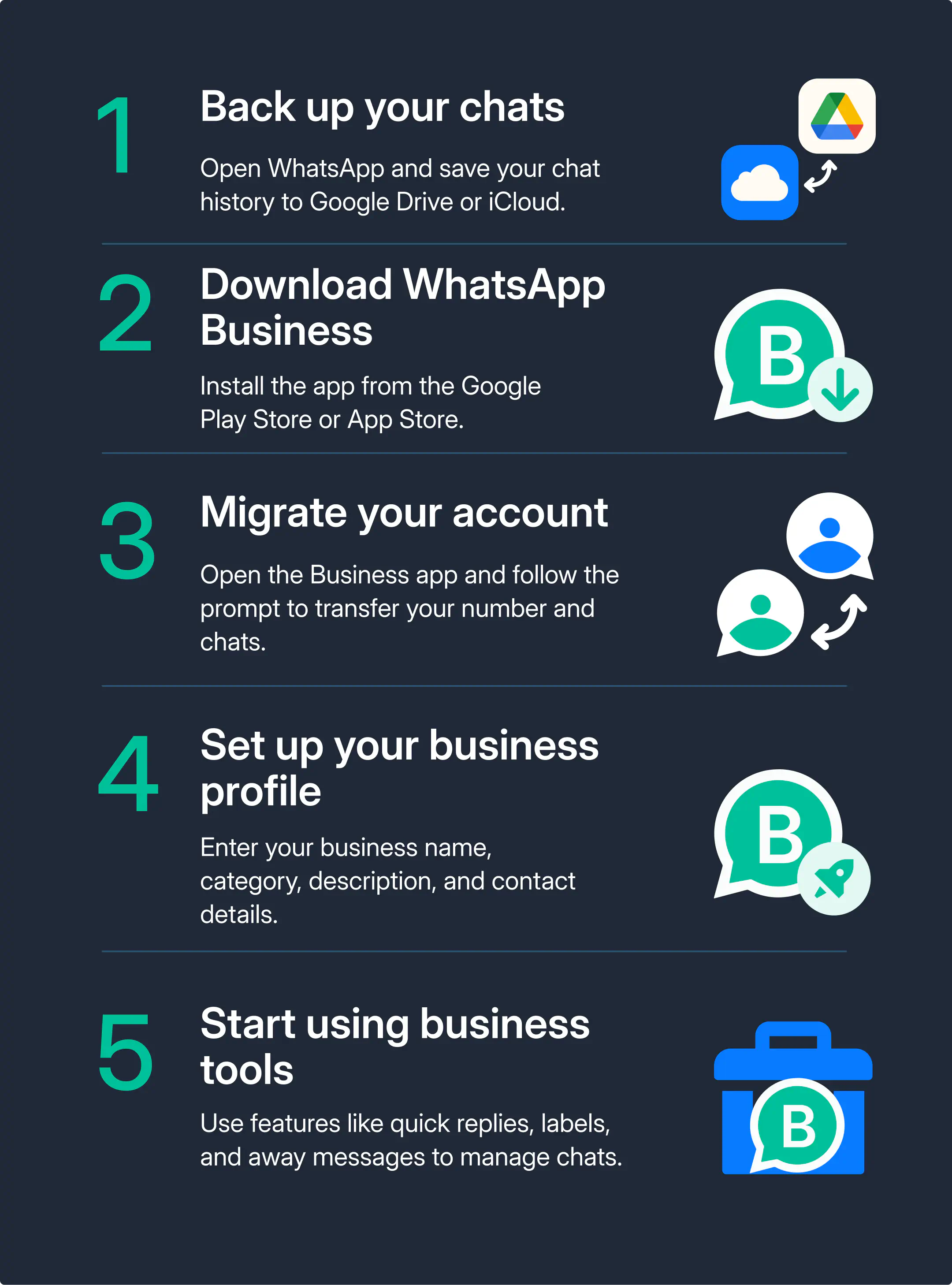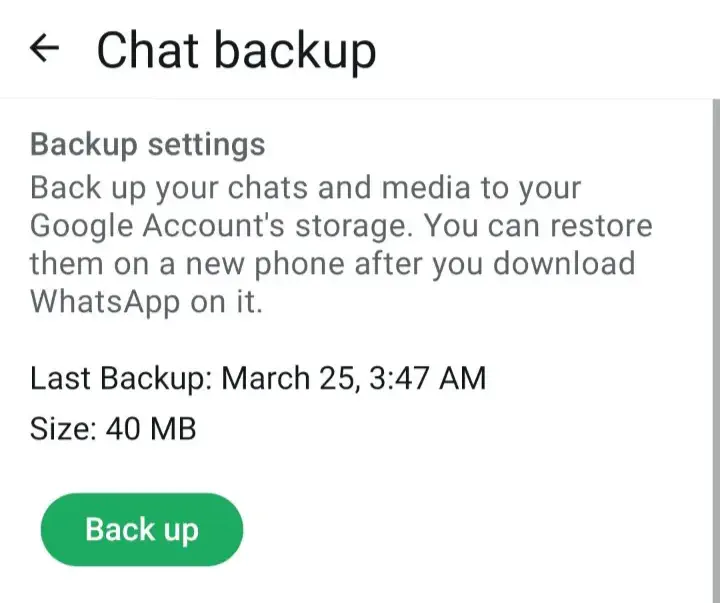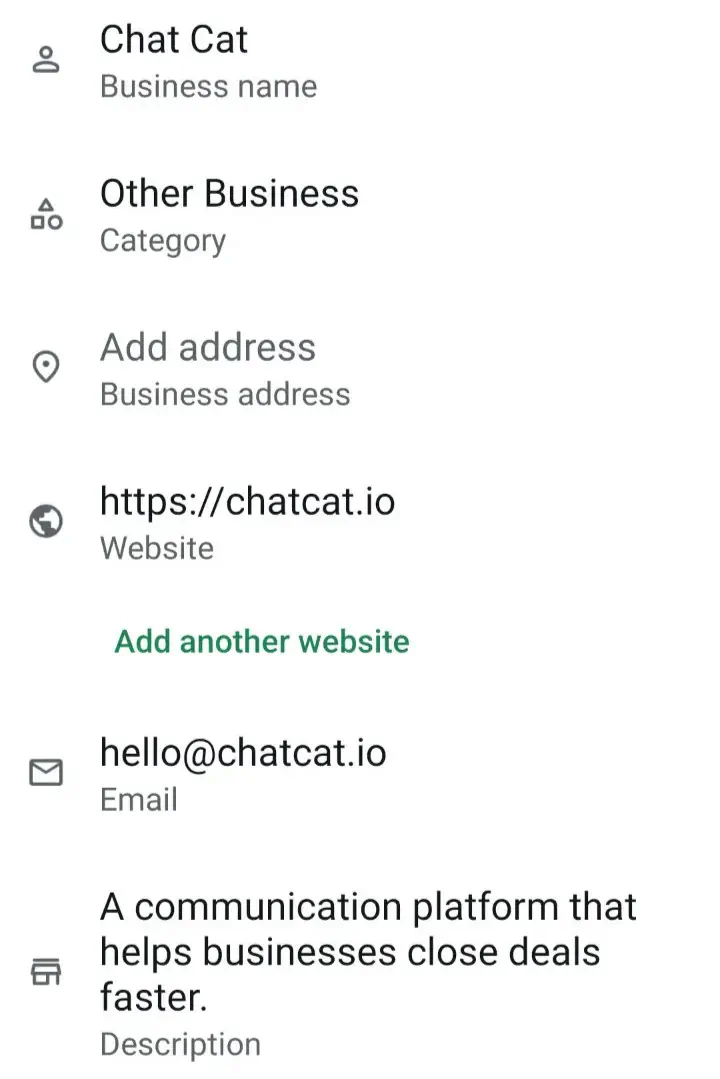How to Switch From Personal WhatsApp to WhatsApp Business App

Tired of mixing personal and business chats on WhatsApp? If you’re in B2B SaaS, you’re probably starting to see how powerful WhatsApp can be for sales. It’s fast, familiar, and surprisingly effective.
But as your business grows, things get messy: chats pile up, customers slip through the cracks, and it becomes harder to stay professional or work as a team on WhatsApp.
That’s where WhatsApp Business comes in. The WhatsApp Business app is made for people like you who run a business, manage customers, and need a little more than what regular WhatsApp can offer.
It’s the first step toward turning WhatsApp from a personal tool into a business channel, without losing your chat history or contacts. Whether you’re a founder or leading a small sales team, switching to the free WhatsApp Business app gives you essential features to help you manage your business on WhatsApp better.
In this article, we’ll walk you through how to switch from private WhatsApp to WhatsApp Business and when it might be time to move beyond the app to the WhatsApp Business Platform for even more power and scalability.
Are you eligible to switch to WhatsApp business
Before diving into how to migrate your personal WhatsApp to a Business account, you need to check if you’re eligible. Here is a breakdown of things to consider:
Eligibility criteria for a business account
To qualify for a WhatsApp Business account, your business needs to meet the following criteria:
- Your business should be a legal entity
- You should have the authority to represent your business
- Your business should have an active phone number
Technical requirements for a business account
To have a working WhatsApp Business account, you need the following technical requirements:
- A phone (Android or iPhone) with an active SIM card
- An internet connection
- Sufficient storage space on your phone
- The latest version of WhatsApp installed
How to move from WhatsApp to WhatsApp Business
If you want to migrate your private WhatsApp account to a Business account withoust losing access to your chats and contacts, here are the key steps you need to follow:

1. Back up your WhatsApp chats
Before you switch, you need to backup your WhatsApp chats in order to avoid losing any important conversations with customers.
Open your current WhatsApp and tap the three dots in the top right corner. Go to Settings > Chats > Chat backup. Hit “Back Up” and wait for it to finish. You’ll need this to move your messages over.

2. Download WhatsApp Business
Next, head to the Google Play Store or App Store and download the WhatsApp Business App.
The app icon is similar, just a different shade of green and with a little plus sign in the logo.
3. Open Business app and migrate your account
When you open WhatsApp Business app, it will recognize your number and ask if you want to transfer your chats from the personal app. Tap Continue. It might take a few minutes, but everything - your chats, media, and settings - will move over.
If you don’t want to move your private account and are looking to start fresh, you can simply create a WhatsApp Business account from scratch.
4. Access Business app features
After switching to the WhatsApp Business app, you’ll gain access to free business tools designed to help small businesses and sales teams manage customers better.
Here is what you can do with a WhatsApp Business acount:
- Set up a WhatsApp business profile with your business name, category, description, email, and website link.

- Use quick replies to serve customers more effectively.
- Use chat labels to organize conversations and categorize chats.

- Send automated greeting or away messages
- Create a catalog to list your products or services directly on WhatsApp
- Track how many messages you’ve sent and received and how people are interacting with your status.
Want a full breakdown of these tools? Check out our detailed guide to WhatsApp Business features
When is it time to move beyond the WhatsApp Business app?
While helpful, the WhatsApp Business app has some important limitations:
- Only one user per account—no multi-user access
- No conversation assignment or collaboration tools
- Limited automation and no workflow customization
- Basic analytics with no performance or CRM insights
- Not ideal for teams or businesses with high chat volume
If you’re starting to feel the limits, it might be time to consider the WhatsApp Business Platform.
With the API, you can connect WhatsApp to a powerful sales tool like Rasayel. This unlocks a whole new level of functionality that includes: automation, media-rich messages, analytics, team collaboration and deep CRM integration.
You’ll be able to scale your communication, assign conversations, track performance, and work with unlimited users, all without being tied to a single phone.
When you’re ready to take WhatsApp from a basic chat tool to a solid sales channel, the Business Platform makes it possible. But for now, the WhatsApp Business App could be a great upgrade to your workflow.
Start simple, grow smart on WhatsApp
Switching from personal WhatsApp to the WhatsApp Business app is a smart first move if you’re running a business and want more structure, speed, and professionalism in your customer conversations. With tools like quick replies, chat labels, and a product catalog, you can manage your WhatsApp sales or support more efficiently—right from your phone.
But as your customer base grows, so do your needs. The WhatsApp Business app has limits: it’s built for one user, on one device, with basic automation and minimal insights.
If you’re starting to feel the pain of chats slipping through or mismanagement of leads, it may be time to explore the WhatsApp Business API. It gives you the flexibility, automation, and scale you need to turn WhatsApp into a true sales engine.
Start simple. And when you’re ready, level up with the WhatsApp Business Platform!
Frequently Asked Questions

Miodrag is a seasoned WhatsApp marketing expert with over 15 years of experience in B2B sales and communication. Specializing in the use of WhatsApp Business API, he helps businesses use WhatsApp’s marketing features to grow their sales and improve customer engagement. As one of the early adopters of WhatsApp Business, Miodrag has a deep understanding of its tools and strategies, making him a trusted authority in the field. His insights have helped many businesses with their communication strategies to achieve measurable results.




![How to Send Quick Reply Messages on WhatsApp [50+ Free Templates]](https://learn.rasayel.io/en/blog/whatsapp-quick-reply/cover_hu16238034217478110535.webp)